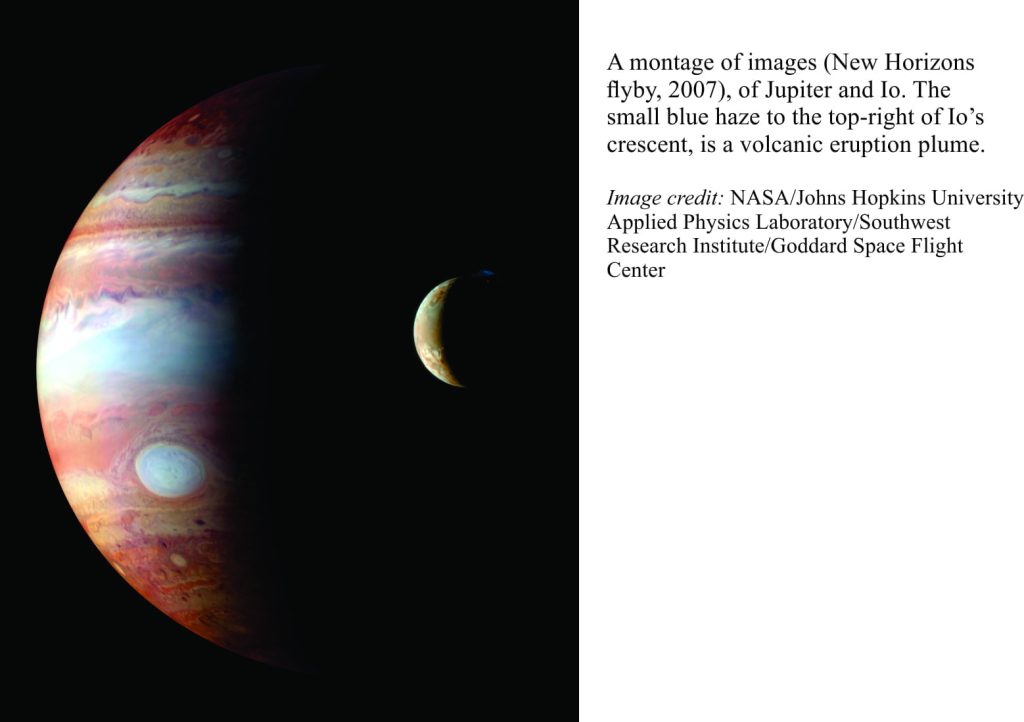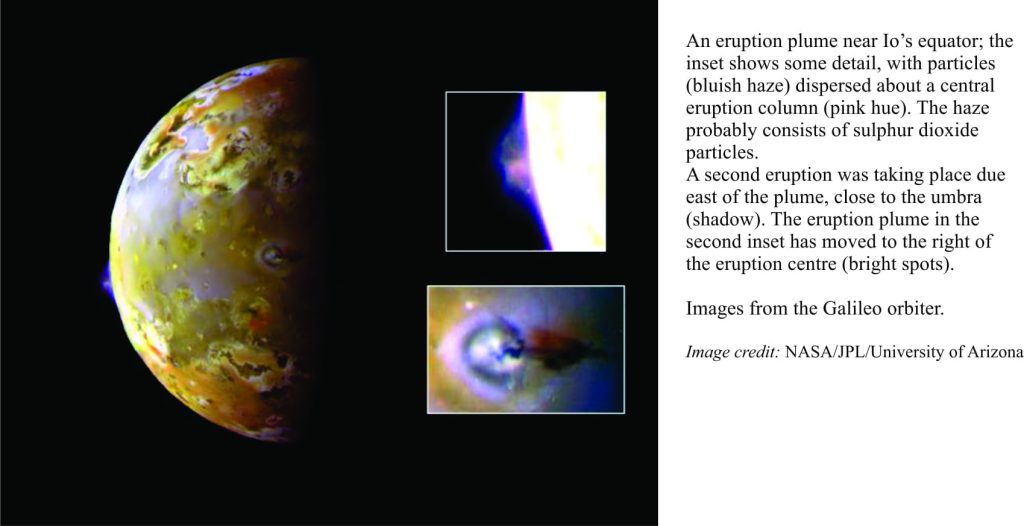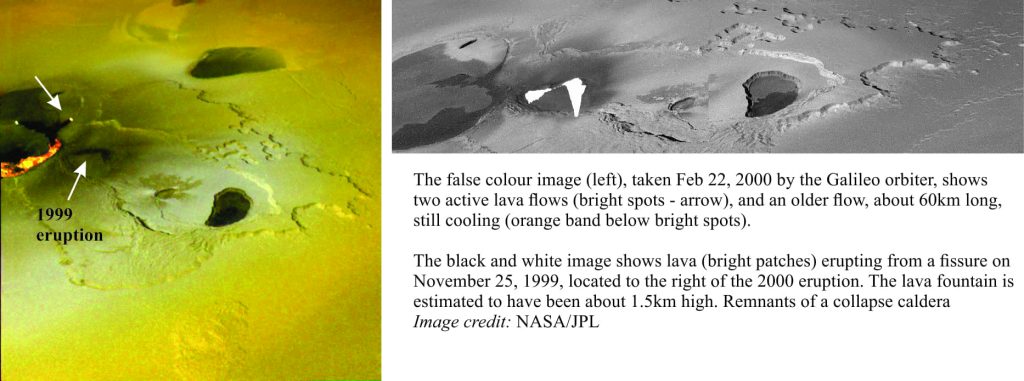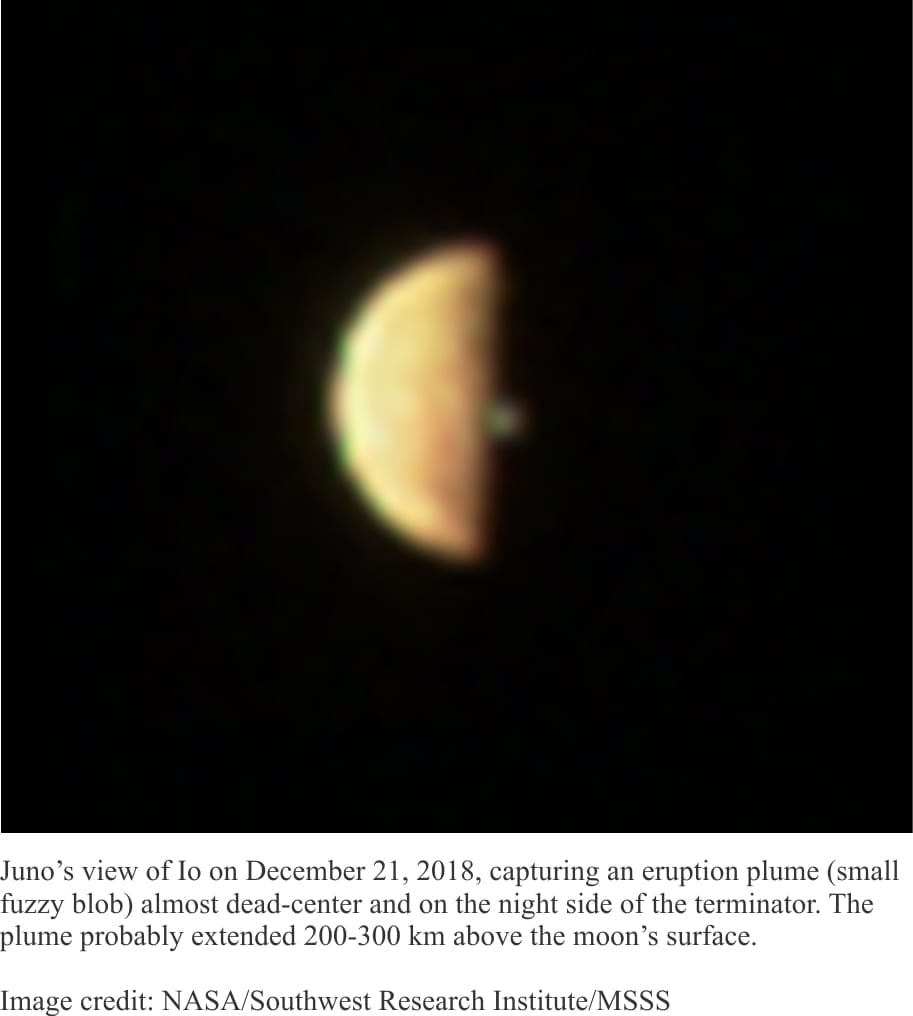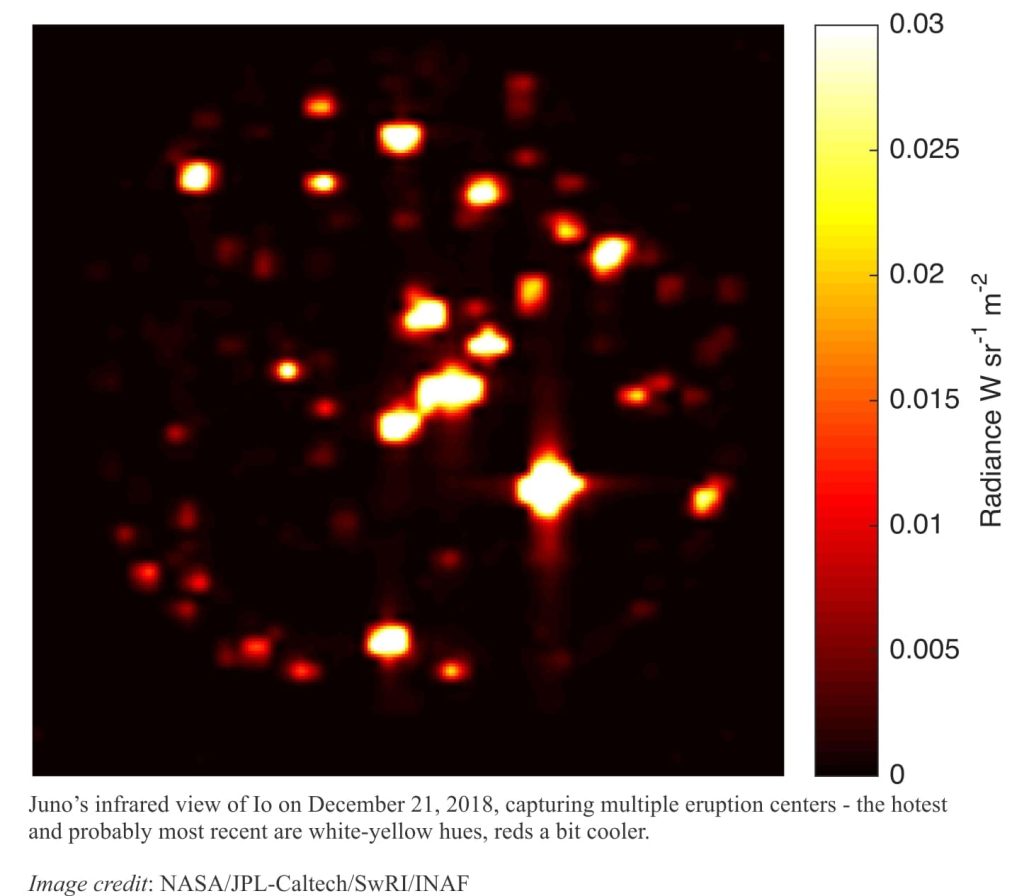Zeus, the head-honcho of assorted Greek gods, heroes, nymphs, and mortals, was chiefly the God of the Sky, or Heavens. One of his minor portfolios was the upholding of Honour, but as mythology relates, he didn’t put much energy into that particular task; he was a philanderer, much to the annoyance of his own wife, Hera (I guess his energies were directed elsewhere). One such misdirection was Io, a mortal woman, who had the misfortune to be turned into a heifer by Zeus, to hide the infidelity from Hera. Io’s memory now survives as a planetary body; one of the Galilean moons of Jupiter is named after her (to be named a moon of the Roman God Jupiter, seems like a historical slap in the face to the Greek deity).
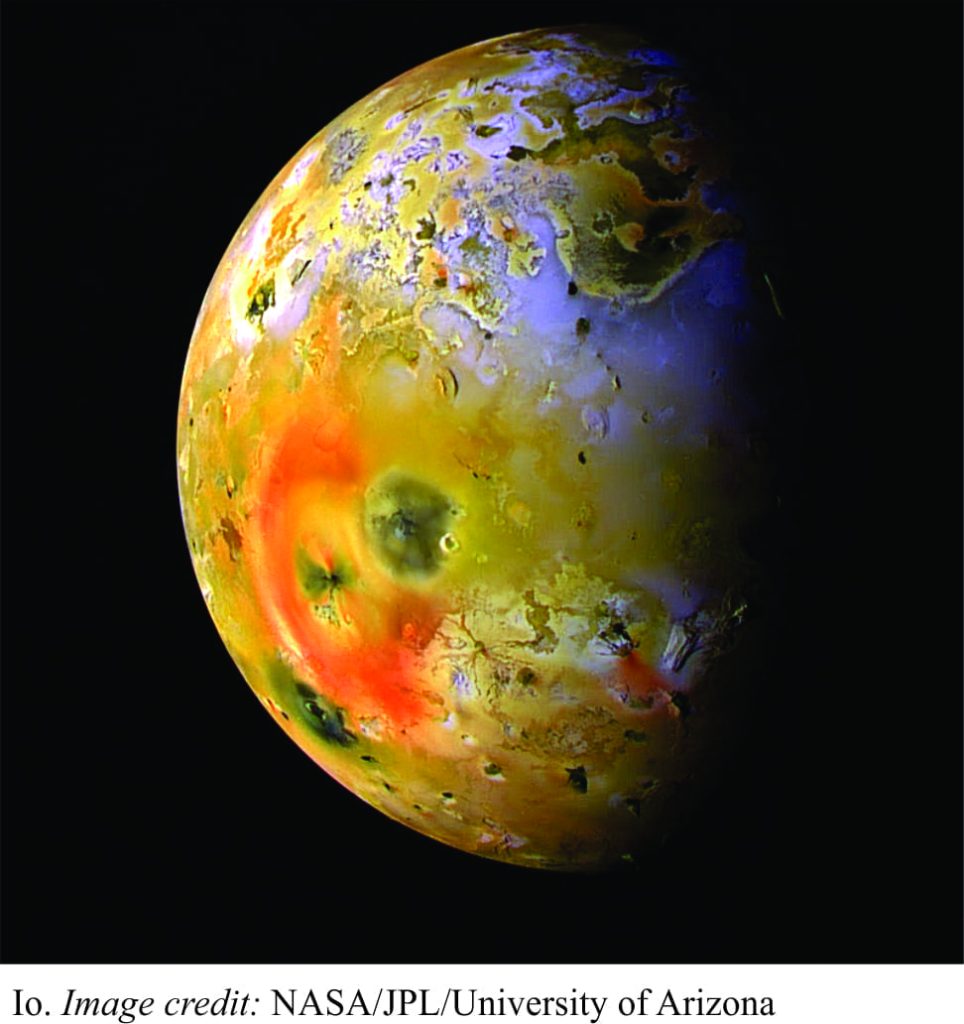 Io is the third largest of Jupiter’s 60 (known) moons, fractionally larger than our own moon, and one of the four moons discovered by Galileo in 1610. It is also one of the most unusual planetary bodies in our solar system, and the only one with active volcanism – over 400 eruptive centres have been mapped. Io’s elliptical orbit brings it to about 420,000 km from the gas giant. The resulting gravitational forces produce huge tides such that the surface bulges up to 100m. These tidal forces generate enough heat to melt rock and sulphur.
Io is the third largest of Jupiter’s 60 (known) moons, fractionally larger than our own moon, and one of the four moons discovered by Galileo in 1610. It is also one of the most unusual planetary bodies in our solar system, and the only one with active volcanism – over 400 eruptive centres have been mapped. Io’s elliptical orbit brings it to about 420,000 km from the gas giant. The resulting gravitational forces produce huge tides such that the surface bulges up to 100m. These tidal forces generate enough heat to melt rock and sulphur.
Io is quite different to the other Jovian moons in that it’s density is more like that of the rocky planets (Earth, Mars, Venus, Mercury) – in fact it is almost the same density as Mars (3.5g/cm3). In comparison, Jupiter’s average density is little more than that of water, at 1.3g/cm3. The core of Io probably consists of iron or iron sulphide, surrounded by a mix of solid and molten rock, the composition of which may be similar to that on earth. The outer solid carapace is an intriguing mix of sulphur in solid form at the surface and silicate rock. Sulphur is also the main constituent of Io’s thin atmosphere, but in this case as sulphur dioxide.
Spectacular images taken by the space craft Galileo in 1995 show a moon splashed with colour, a kind of post-impressionist experiment; NASA refers to it in more colloquial terms as a giant pizza. Frequent volcanic eruptions of lava and fine (sulphur?) particles mean that Io’s surface is constantly being renewed; a consequence of this is that impact craters are poorly preserved because they too are recycled.
One of the more exciting discoveries from the Galileo images was active eruption plumes, extending more than 300km above the moon surface (the blue colour is probably due to dispersion of light by plume aerosols). Several plumes were imaged during different orbits by the Galileo explorer.
Active eruption of lava was also discovered. In the two images below, eruptions about a year apart produced lava flows that contributed to the ridged and fractured surface topography. Also visible are steep-sided depressions, thought to be the remnants of once active calderas, formed by collapse of the surface as lavas were erupted. The calderas are analogous to structures seen on earth. Older lava flows and deposits from the plumes are buried and eventually incorporated, or recycled into the molten subsurface. On earth, the recycling of rock and water into the crust and mantle is driven by plate tectonics; on Io, sulphur and rock recycling is driven by tidal forces and volcanism.
Space exploration over the last couple of decades has produced a myriad images. There seems to be an endless supply of astronomical vistas, all spectacular, even surreal. Despite this surfeit, I still feel a sense of amazement, a thrill, to witness the details of active Martian sand dunes, the jumbled surface of comet 67P/Churyumov-Gerasimenko, or the stark ruggedness of Pluto’s frozen surface. I am not yet exhausted by this surfeit.
Update on Io
Space craft Juno is well into its 5 year exploration of Jupiter. During its 17th orbit it came within 300,000 km of Io. On December 21 2018, with 4 of its cameras turned towards the moon, a new eruption plume was imaged. The plume was just beyond the twilight zone (image below – right of the terminator – the day-night divide), but was visible because it extended above the moon’s horizon.
One of the more exciting images captured by the Infrared Auroral Mapper instrument shows several point-sources of high heat most of which can be correlated with recent eruptions. In the image below red and white-yellow colours indicate very high heat from presently active and recently active eruptions. The level of volcanic activity is even greater than that on Earth.
NASA/JPL-Caltech/SwRI/INAF
